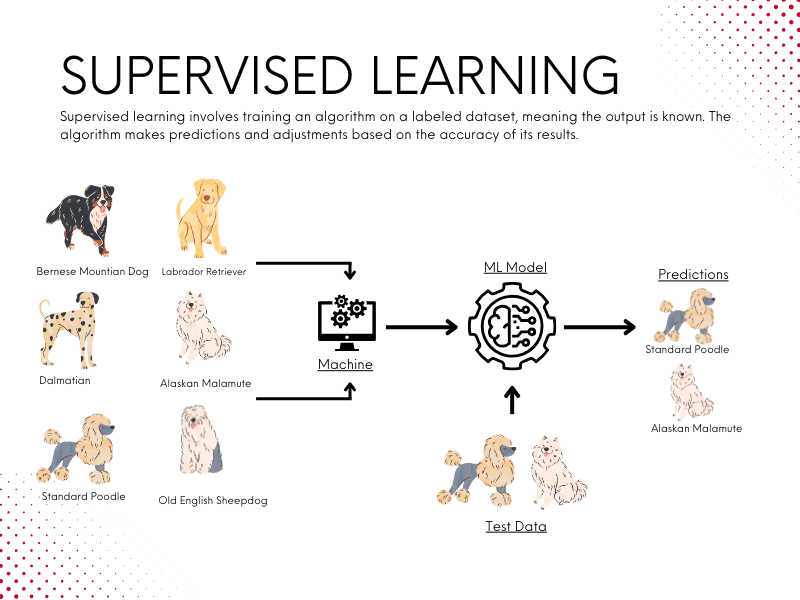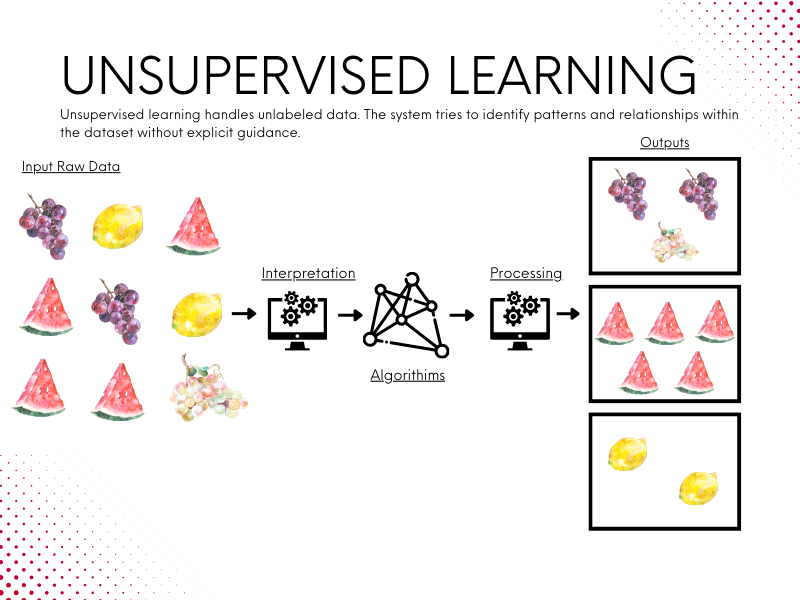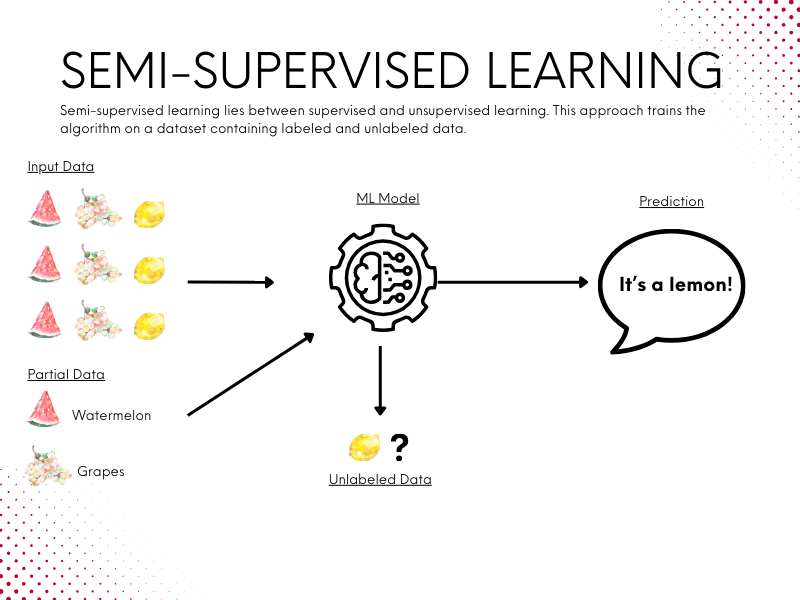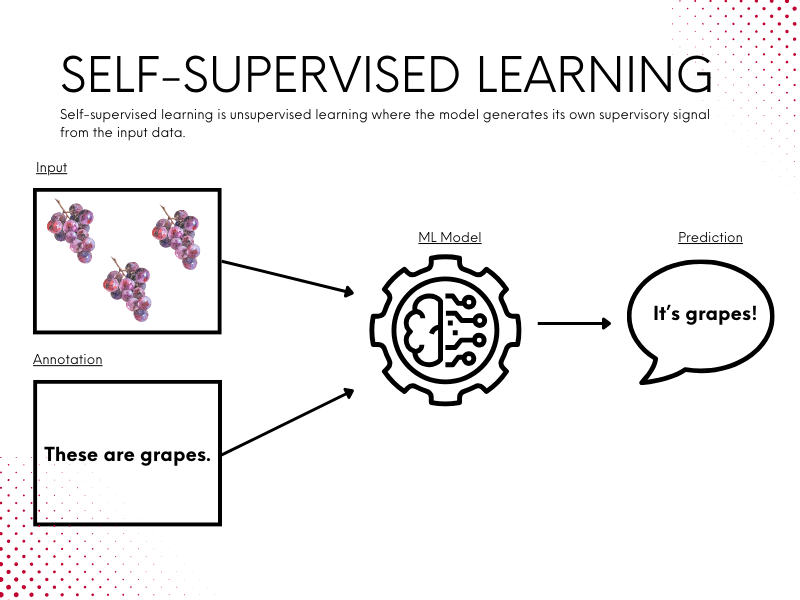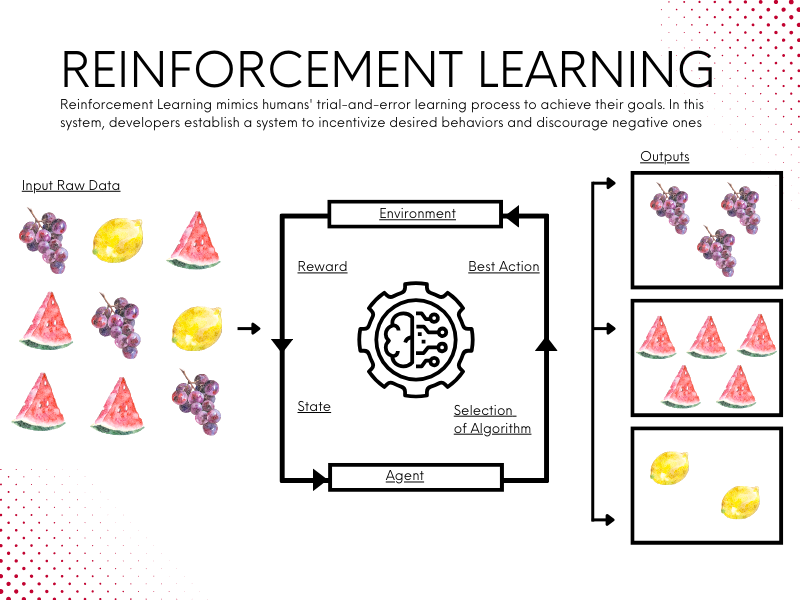Table of Contents
Timeline of Artificial Intelligence
Historical Overview of AI Development
Foundations of Artificial Intelligence
Neural Networks and Deep Learning
Machine Learning
Traditional Program vs. Machine Learning
Role of Artificial Intelligence in Various Industries
The Importance of Observability in Artificial Intelligence
Future Trends in Artificial Intelligence
Timeline of Artificial Intelligence
While AI has existed for several decades, it has only recently become a significant disruptor within our society and businesses. Its appearance in mainstream media has been a long time coming, and some truly awe-inspiring work has gone into making this technology what it is today.
Historical Overview of AI Development
In 1950, Alan Touring, the father of modern computer science and a pioneer of artificial intelligence, said, “We may hope that machines will eventually compete with men in all purely intellectual fields.”
Over 70 years later, we continue to test the boundaries of his statement.
As technology has advanced and grown, we have moved into a realm where machines compete and collaborate with humans in intellectual endeavors, shaping a future where innovation knows no bounds.
Foundations of Artificial Intelligence
Turing’s initial ideas about smart machines and the advent of today’s generative AI chat apps were not developed overnight. They were a combination of technological advancements that developed from AI’s core foundational pillars. These pillars include various disciplines and methodologies that have converged to form this dynamic and transformative field.
AI is an interdisciplinary field that integrates principles from various domains, including logic, math, neuroscience, and cognitive science. Machine learning, natural language processing, and computer vision have also played a pivotal role in shaping AI’s capabilities.
These foundational elements provide the framework for artificial intelligence to evolve and thrive. It’s not just one type of learning that offers us AI technology but a variety of machine learning approaches with unique advantages and applications.
Neural Networks and Deep Learning
Neural networks and deep learning have revolutionized how computers mimic and augment human intelligence. Drawing inspiration from the brain’s architecture, neural networks use layers of interconnected nodes to process and interpret vast amounts of data.
Deep learning, a subset of machine learning, empowers these networks to learn and make decisions with astonishing accuracy. From voice recognition systems to self-driving cars, the application of these technologies is reshaping industries and everyday life.
Neural Networks: Basic Concepts
Our human brains rely on neurons to transmit sensory and mechanical information throughout the body via chemical signals and electrical impulses. These neurons provide efficient, lightning-fast communication within our bodies, allowing this process to happen.
Using the brain and this connectivity as inspiration, researchers created a synthetic neural network that consists of thousands of simple processing nodes that are densely interconnected. The strength of these neural connections, or “weights,” is adjusted during the model’s training. This allows the network to learn from the data it processes and adjust weights to minimize the difference between actual and predicted output.
Deep Learning: Basic Concepts
If we stick with body analogies, neural networks can be considered the backbone of deep learning algorithms. Deep learning builds upon the foundational principles of neural networks and introduces more complex architectures that enable networks to learn hierarchical representations of data.
These deep learning models excel in tasks ranging from image classification and speech recognition to natural language processing and autonomous decision-making. In autonomous decision-making scenarios such as self-driving cars and robotics, deep learning models leverage their ability to learn from vast amounts of data to make real-time decisions and navigate complex environments.
Machine Learning
Machine Learning (ML), a subset of AI, enables computers to learn from and make data-based decisions. ML is broadly categorized into five categories.

Supervised Learning
Supervised learning involves training an algorithm on a labeled dataset, meaning the output is known. The algorithm makes predictions and adjustments based on the accuracy of its results.
For example, in a supervised learning scenario for image recognition, the algorithm is trained on a dataset of labeled images where each image is associated with a specific label (e.g., cat, dog, bird).
Unsupervised Learning
Unsupervised learning handles unlabeled data. The system tries to identify patterns and relationships within the dataset without explicit guidance. An example of unsupervised learning is clustering. With clustering, the algorithm groups similar data points together based on their characteristics without any predefined categories or labels.
Clustering is most often used for exploratory data analysis to discover information and patterns in the data. It is a powerful tool for helping users understand data and reveal insights.
Semi-Supervised Learning
Semi-supervised learning lies between supervised and unsupervised learning. This approach trains the algorithm on a dataset containing labeled and unlabeled data. While the labeled data guides the algorithm, the quantity of unlabeled data allows the model to generalize and learn more from the underlying data distribution.
Semi-supervised learning is beneficial when labeled data is scarce or costly, as it leverages the unlabeled data to enhance the model’s performance.
Self-Supervised Learning
Self-supervised learning is unsupervised learning where the model generates its own supervisory signal from the input data. Unlike traditional supervised learning, where external labels are provided, self-supervised learning tasks are designed to predict certain input data parts or properties without human-provided labels.
For example, a self-supervised learning task in natural language processing might involve predicting the next word in a sentence or filling in missing words from a partially masked input. By learning from the inherent structure or relationships within the data, self-supervised learning enables models to capture rich representations of the input data and effectively transfer knowledge to downstream tasks.
Reinforcement Learning
Reinforcement Learning mimics humans’ trial-and-error learning process to achieve their goals. In this system developers establish a system to incentivize desired behaviors and discourage negative ones. Positive values are assigned to favorable actions to encourage their use and prioritization, while negative values deter undesirable behaviors.
The algorithm learns by receiving these rewards for positive actions in a dynamic environment, much like teaching a pet through treats. This approach is significant because it enables the model to acquire the skills necessary to navigate the intricacies of its designated environment. Through a feedback mechanism often involving rewards and penalties, the model gradually learns from its surroundings and refines its actions to achieve optimal performance over time.
The Role of Artificial Intelligence in Various Industries
At home, AI has become embedded in many aspects of daily life, from recommendation algorithms on streaming services to digital assistants on smartphones.
AI in the workplace is also revolutionizing how companies operate and scale. AI offers unparalleled insights into data, automates mundane tasks, and has opened new avenues for business innovation.
Many businesses have already started to lean heavily on AI in their operations, and below are a few industries that can benefit from their implementation. Several sectors have already reaped the benefits of AI technology, embracing its application to enhance their services and operations.
Healthcare
AI’s sophisticated analytics and pattern recognition capabilities enhance precision in diagnosis, broaden the scope of treatment, and transform patient care. With its remarkable ability to digest and learn from vast quantities of medical data, AI in healthcare has become a tool that medical professionals can use to deliver quicker, more precise, and individualized healthcare options, optimizing patient outcomes and advancing the efficiency of healthcare delivery.
Diagnosis and Treatment
In the USA today, misdiagnosis (26%) rivals surgical accidents (25%) as the leading cause of medicolegal claims. Unfortunately, “human cognition” was a leading factor in misdiagnosis. These numbers indicate an opportunity for AI’s objective analysis and data-driven insights to complement the expertise of healthcare professionals, potentially reducing the rate of diagnostic errors and improving patient care.
AI systems can analyze medical data and assist in identifying patterns within data sets that human experts might overlook. Identifying these patterns can lead to more accurate diagnoses and personalized treatment plans. AI can also continuously learn from new data through machine learning algorithms, improving its diagnostic accuracy and potentially reducing misdiagnoses.
Communication
AI plays a pivotal role in enhancing communication processes across healthcare settings. Internally, AI-powered tools streamline information exchange within healthcare organizations, such as Electronic Health Records (EHR) Systems that centralize patient data. However, healthcare companies must be cautious with their chosen AI platform, as HIPAA guidelines regarding patient data privacy and security are stringent.
Compliance with these regulations is crucial to protect sensitive information and maintain trust in the healthcare system’s integrity. Healthcare organizations can leverage AI models built with privacy-preserving techniques to maintain compliance with privacy regulations and secure their data.
Medical Imaging
Advanced image processing algorithms enable AI to detect subtle abnormalities in medical images that might escape the human eye, aiding in the early detection and treatment of diseases.
AI-enhanced medical imaging techniques, such as MRI and CT scans, can provide detailed insights into the progression of diseases like cancer, allowing for more targeted interventions. Streamlining the interpretation process using AI reduces the time it takes to analyze medical images, enabling healthcare professionals to make timely decisions and improve patient outcomes.
Supply Chain
The supply chain is a critical component of every industry, including producing, distributing, and delivering goods and services. The introduction of AI in supply chain operations has emerged as a transformative technology. Early supply chain management adopters of AI technology have enhanced service levels by 65%, improved inventory levels by 35%, and reduced logistics costs by 15%. AI has optimized supply chain operations and enhanced efficiency across various stages of the supply chain lifecycle. Below are some ways specific supply chain processes have benefited from introducing AI.
Demand Forecasting
AI-driven demand forecasting algorithms analyze historical sales data, market trends, and external factors to predict future demand patterns accurately. These algorithms can use machine learning techniques to identify hidden correlations and seasonality trends. Through precise demand forecasting, organizations can enhance customer satisfaction, streamline production planning, and reduce revenue loss associated with stock shortages or overstocking.
Inventory Management
AI-powered inventory management systems optimize inventory levels, warehouse space utilization, and order fulfillment processes. These systems employ predictive analytics to anticipate and plan based on demand forecasts and lead times. By automating inventory, businesses can reduce stockouts, improve inventory turnover rates, and enhance overall supply chain resilience.
Logistics & Transportation
Historically, transportation optimization and logistics required a resource-intensive process that depended on logistical operators’ expertise. This involved analyzing maps, traffic patterns, and weather forecasts to plan transportation routes. Using an AI-powered solution, companies that once relied on operators’ intensive labor and expertise can now pinpoint the most efficient pathways, shorten delivery durations, and cut down on transit expenses.
Finance
AI’s integration into financial services streamlines operations and significantly enhances decision-making and risk management. With the power to analyze vast amounts of market data, AI facilitates algorithmic trading by identifying profitable opportunities and can optimize investment strategies in real-time. AI is also involved in fraud detection, using multiple machine-learning models to detect and prevent suspicious activities. AI has also revolutionized customer interactions, deploying chatbots for immediate, personalized service, elevating the user experience and operational efficiency.
Algorithmic Trading
AI-driven algorithms analyze market trends and historical data to identify profitable trading opportunities and execute trades precisely and quickly. By leveraging complex mathematical models, AI can adapt to changing market conditions in real-time, optimizing trading strategies and maximizing investor returns.
This technology has allowed AI traders to make informed decisions based on market data, increasing the accuracy of trades and reducing transaction costs and human error.
Fraud Detection
Machine learning algorithms sift through vast amounts of transactional data to identify suspicious patterns and anomalies indicative of fraudulent activity. By continuously learning from new data and adapting to emerging threats, AI systems enhance fraud detection capabilities and minimize financial losses for businesses and consumers.
Real-time monitoring and analysis allow financial institutions to respond swiftly to potential security breaches and mitigate risks before they escalate.
Customer Service and Chatbots
AI-driven chatbots revolutionize customer service by providing instant support and personalized assistance to users. Through natural language processing (NLP) algorithms, chatbots can understand and respond to customer inquiries, troubleshoot issues, and recommend relevant financial products and services.
By automating routine tasks and inquiries, chatbots free up human agents to focus on more complex customer needs, improving overall service quality and efficiency of the financial sector.
The Importance of Observability in Artificial Intelligence
As AI systems become increasingly integrated into various aspects of our lives, questions about accountability, fairness, and privacy emerge. The importance of observability in AI systems is crucial for detecting issues such as hallucinations, biases, drift, and breaches in data privacy.
Proactive measures to ensure that AI technologies are being updated and maintained responsibly include implementing transparent practices for algorithmic auditing, establishing continuous monitoring protocols, and involving diverse perspectives in the development and oversight process to align AI operations with ethical standards and societal values.
Hallucinations in AI
Hallucinations in AI refer to instances where an AI system generates false or misleading information that is not supported by its input data. This phenomenon is particularly common in generative models, such as those used in natural language processing or image creation, where the AI will ‘invent’ details or narratives without a factual basis.
To mitigate the risks of AI hallucinations, models must incorporate robust data validation protocols, apply strict training data quality controls, and use algorithmic checks that can flag or correct hallucinatory outputs. Ensuring that AI systems are well-calibrated, and their outputs are consistently reviewed by human overseers can also minimize the impact of these errors.
Bias and Fairness in AI Systems
Machine learning models trained on biased or incomplete datasets can inadvertently perpetuate biases in their training data, leading to unfair outcomes and discriminatory decision-making. Biases in AI systems can manifest in various forms, including racial, gender, and socioeconomic biases, which may result in disparate treatment or opportunities for specific demographic groups.
Addressing prejudice and promoting fairness in AI systems requires careful attention. In AI development, transparency, accountability, and diversity are essential to mitigate bias and ensure that AI systems uphold ethical and societal values. These AI systems also must include ongoing monitoring, auditing, and algorithmic impact assessments that can help identify and address bias in AI systems to promote equitable outcomes for all individuals and communities.
Drifts in AI Models
Drifts in AI models are a phenomenon where the model’s predictive performance deteriorates over time. This decline is due to changes in the underlying data patterns that the model was not initially trained to predict. As the real-world environment evolves, the data fed into the model diverges from the historical data used during the training phase.
This can lead to a decline in the accuracy and reliability of the AI system’s outputs. Addressing model drift is crucial for maintaining the efficacy of AI systems, especially in dynamic fields like finance and healthcare, where patterns of behavior can shift rapidly and unpredictably.
Privacy and Data Security Concerns
The data used to train and deploy AI systems often contains sensitive information about individuals, raising concerns about privacy and data security. Unauthorized access, data breaches, and misuse of personal data pose significant risks to individual privacy rights and can undermine trust in AI-driven technologies.
Using AI to protect privacy and data security requires robust data protection measures, encryption techniques, and access controls to safeguard sensitive data. Regulatory frameworks might also impose legal obligations on organizations to ensure the lawful and ethical handling of personal data in AI applications. Organizations can mitigate privacy risks and build trust with users and stakeholders by prioritizing privacy-by-design principles and adopting privacy-preserving technologies.
Future Trends in AI
As we look ahead, we see several emerging trends poised to shape the future landscape of AI. These trends represent advancements and innovations that promise to further enhance AI’s capabilities and impact across various domains. Here are some key future trends in AI:
- Streamlined generative AI
- AI and personalization
- Accessible model optimization
- Custom AI offerings
Streamlined Generative AI
Generative AI, which enables machines to generate content such as images, text, and music, is becoming increasingly sophisticated. Future advancements in generative AI will focus on streamlining the process of content creation or summarization, making it more efficient, customizable, and accessible. This trend will empower creators and businesses to leverage AI-generation for a wide range of applications, from art and design to marketing and supply chain logistics.
AI and Personalization
Personalization plays a crucial role in cultivating customer engagement and satisfaction across diverse sectors. Future AI systems will leverage advanced machine learning algorithms to deliver highly personalized AI-led experiences tailored to individual preferences, behaviors, and contexts. This personalization trend will enable businesses to enhance customer relationships, increase brand loyalty, and drive revenue growth through targeted marketing tactics.
Accessible Model Optimization
Model optimization, which involves improving the performance and efficiency of AI models, is essential for maximizing the value of AI applications. Future advancements in model optimization will focus on making the process more accessible and user-friendly, allowing developers and data scientists to optimize AI models with minimal effort and expertise. This trend will democratize access to state-of-the-art AI capabilities, enabling organizations of all sizes to leverage AI for innovation and growth.
Custom AI Offerings
Custom AI solutions will offer organizations the flexibility, scalability, and performance to address their specific challenges and objectives. Companies can use private, custom solutions to deliver superior accuracy and effectiveness compared to off-the-shelf alternatives. These solutions can be modified and expanded to accommodate evolving needs and market dynamics, empowering companies to maintain a competitive edge and continue to drive innovation within their industries.
At Rōnin, we’ve created SamurAI™, a custom Generative AI solution designed to align with each organization’s specific needs and goals. This offering allows businesses to deploy and scale private, bespoke AI models, complemented by essential auditing, monitoring, and management tools for their AI resources.
